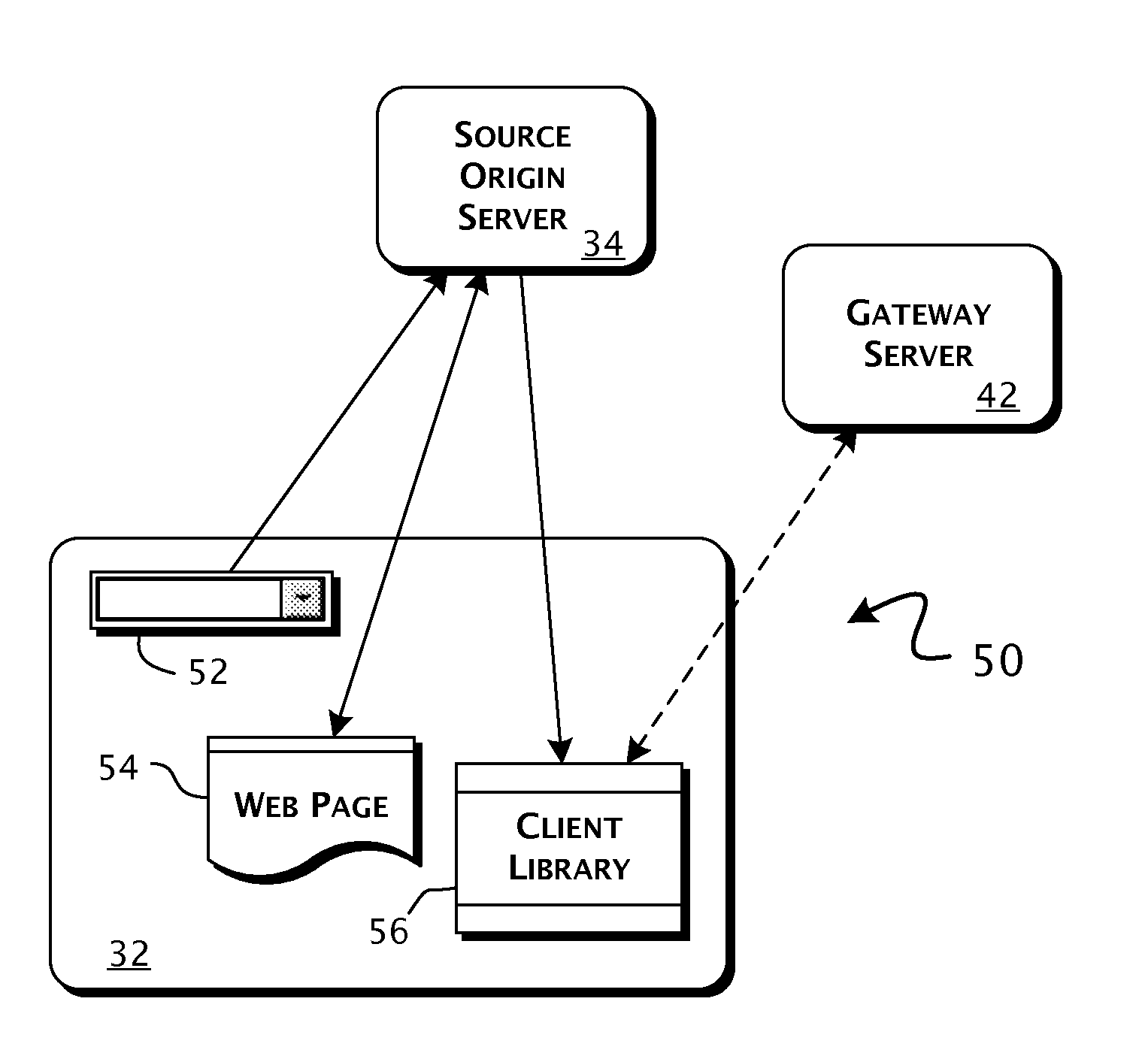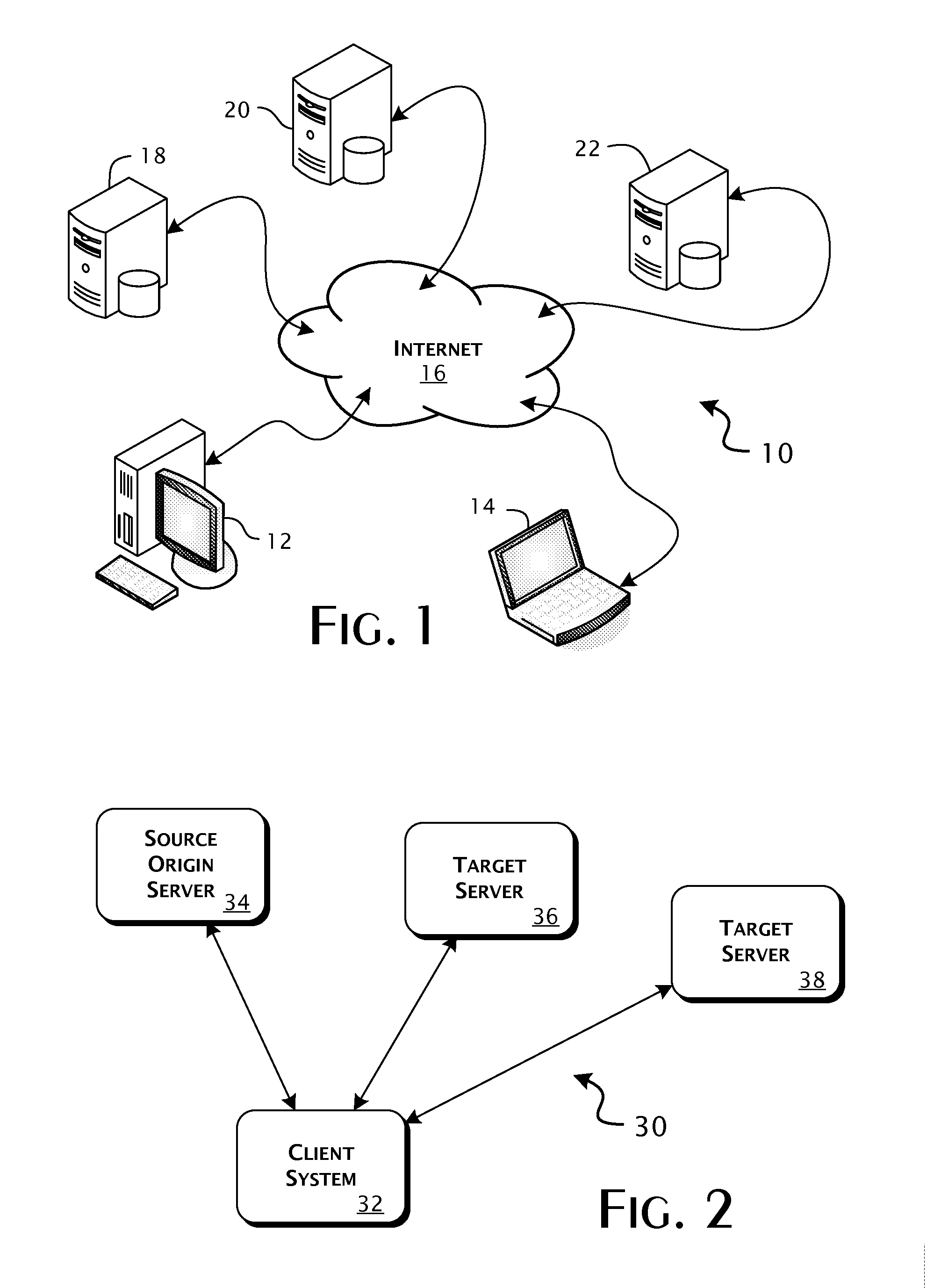Enterprise client-server system and methods of providing web application support through distributed emulation of websocket communications
- Summary
- Abstract
- Description
- Claims
- Application Information
AI Technical Summary
Benefits of technology
Problems solved by technology
Method used
Image
Examples
Embodiment Construction
[0033]The present invention satisfies the need for real-time, full-duplex communications capabilities substantially independent of the current native capabilities of client Web-browsers that may be used to access Web services. In the following detailed description of the invention like reference numerals are used to designate like parts depicted in one or more of the figures.
[0034]The draft HTML5 specification, including supporting specifications, defines the native architecture and operational features of WebSockets and Server-Sent Events (SSE) recommended for implementation in Web-browser and similar HTTP-based client applications. WebSockets and Server-Sent Events are premised on client applications being capable of utilizing full-duplex, direct TCP communication channels. In application 10 relevant to the present invention, as generally shown in FIG. 1, conventional client systems 12, 14 execute web-browser applications to access through the public Internet, private intranet, or...
PUM
 Login to View More
Login to View More Abstract
Description
Claims
Application Information
 Login to View More
Login to View More - R&D
- Intellectual Property
- Life Sciences
- Materials
- Tech Scout
- Unparalleled Data Quality
- Higher Quality Content
- 60% Fewer Hallucinations
Browse by: Latest US Patents, China's latest patents, Technical Efficacy Thesaurus, Application Domain, Technology Topic, Popular Technical Reports.
© 2025 PatSnap. All rights reserved.Legal|Privacy policy|Modern Slavery Act Transparency Statement|Sitemap|About US| Contact US: help@patsnap.com



